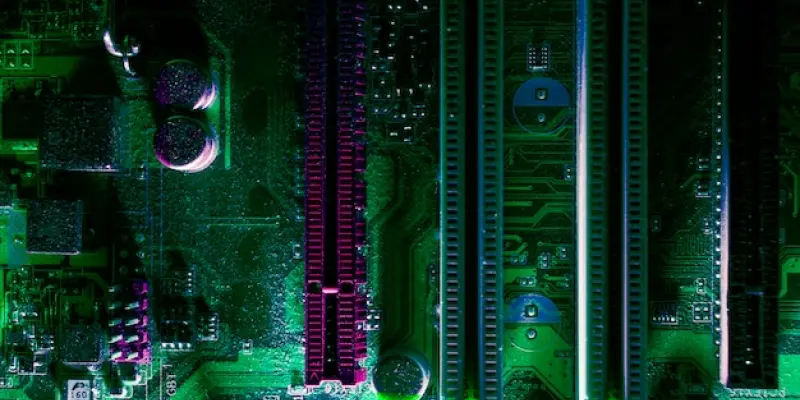The anticipation surrounding Nvidia’s latest release, the RTX 5060 graphics card, has taken a significant turn as the company makes moves that echo a strategy deployed for its predecessor, the RTX 5060 Ti. With the launch officially set for May 19, Nvidia’s decision to withhold critical review drivers from tech reviewers has sparked a wave of speculation and concern. By delaying access to necessary testing tools until the day of the product’s announcement, the company raises questions about potential performance issues with its new card. Industry experts and consumers alike are now questioning the rationale behind this approach, especially in a tech climate that demands transparency.
Delayed Reviews and Computex Coincidence
Performance Concerns and Strategic Timing
The timing of Nvidia’s strategy has coincidentally aligned with Computex, a significant event in the tech calendar, thus minimizing the window for critical exposure. Reviewers from notable technology platforms, like TechSpot and Hardware Unboxed, find themselves unable to thoroughly test and evaluate the RTX 5060 on its release day. This inability to scrutinize the card’s performance before public availability means consumers remain in the dark about what their potential $300 investment might yield in real-world scenarios. This delay circumscribes the kind of comprehensive analysis that would typically accompany a high-profile launch. Historically, similar approaches have not fared well for Nvidia. The delayed reviews for the RTX 5060 Ti’s 8GB variant left many in the tech community dissatisfied, particularly when significant performance shortcomings were uncovered post-launch. The parallels between the reaction to the RTX 5060 Ti and the current rollout underscore a cautious air of skepticism, casting a shadow over Nvidia’s latest offering. Through the lens of consumer choice, the RTX 5060 presents a controversial proposition. Critics assert that the investment demanded by Nvidia for an 8GB VRAM card does not adequately align with alternative offerings in the market. The ongoing debate over the card’s value intensifies when compared to Intel’s 12GB Arc B580, which provides a favorable alternative for budget-conscious consumers. The timing and nature of these reviews will widely influence consumer decisions and Nvidia’s future strategy.
Technological Enhancements Versus Market Realities
Despite the scrutiny, it is worth noting that the RTX 5060 does promise certain advancements over its predecessors, which Nvidia has emphasized in its promotional activities. Equipping the card with features such as 3,840 CUDA cores and neural rendering support aligns with trends in machine learning-enhanced graphics rendering. These enhancements indeed signal technical progress, reflecting a broader push toward integrating more advanced computing capabilities into mainstream GPUs.
Yet, these improvements might be overshadowed by the economics of the situation. The pricing strategy that ties performance with the budget-conscious end of the graphics card spectrum might not resonate with all consumers. Critical reviews could potentially expose performance limitations, especially when gauged against competitive products that seem to offer better value.
As the tech community waits for independent insights, Nvidia faces a challenging narrative. The delayed access to crucial reviews poses potential risks to the company’s reputation and consumer trust. The technical community remains on edge, eager to dissect the card’s performance through rigorous testing to validate Nvidia’s claims. Until such transparency is available, Nvidia’s approach will continue to fuel intense debate and speculation.
Consumer Implications and Future Considerations
Balancing Innovation with Transparency
Navigating the complex landscape of technological innovation and consumer expectations demands balancing cutting-edge advancements with transparent communication. Nvidia’s recent strategies underscore a broader industry tension between early exposure to potential performance pitfalls and managing consumer perception effectively. The RTX 5060 situation exemplifies this complex dance and poses broader questions about the tech industry’s future directions and ethics.
The broader implications of Nvidia’s strategies extend beyond the immediate release of a graphics card. They touch upon the expectations that tech enthusiasts develop for transparency and accuracy in product promotional strategies. As industries evolve, so do the consumers who base their spending on informed decision-making processes. Nvidia’s current approach seems to challenge existing paradigms of open innovation, testing how much leeway consumers and critics will grant before demanding accountability.
Looking Ahead for Industry and Consumers
The buzz surrounding Nvidia’s RTX 5060 graphics card has experienced an intriguing twist, following a playbook reminiscent of the strategy employed for its forerunner, the RTX 5060 Ti. Scheduled to launch on May 19, Nvidia’s decision to withhold essential review drivers from tech reviewers is stirring up a storm of speculation and concern. This move means that professionals and enthusiasts won’t gain access to vital testing tools until the card is officially announced, fostering unease and doubts about whether the new card may harbor performance pitfalls. Such tactics lead industry veterans and consumers to question Nvidia’s motives, especially in an era where the technology sector values openness and transparency. With the stakes higher than ever, Nvidia’s approach encourages scrutiny, pushing analysts to ponder whether this gamble signifies an underlying need to divert attention from performance limitations. As the release date approaches, the anticipation becomes charged with skepticism and curiosity.

